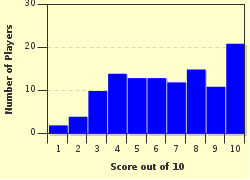Quiz Answer Key and Fun Facts
1. Alberto begins his tour by explaining that Brazil is the world's largest producer of coffee but has been a relative latecomer to coffee cultivation. Coffee plants weren't introduced here until the eighteenth century. Coffee was first grown in Africa and then spread to Europe in the Middle Ages, through the Muslim world. With these Islamic connections, what, allegedly, did Pope Clement VIII have to do, in 1600, to convince Christians that coffee was spiritually acceptable to drink?
2. Just a few weeks ago, on October 19th 1901, Alberto claimed the Deutsch de la Meurthe prize of 50,000 francs. This was for the first person to fly around the Eiffel Tower, over a stipulated course, in less than 30 minutes. He split the money between his crew and the Parisian poor. Was this due to an awareness of poverty from contact with coffee pickers in his own country? Indeed, prior to its formal abolition in 1888, slavery was at the heart of the Brazilian coffee industry. Across all industries, roughly how many slaves were exported from Africa to Brazil before emancipation?
3. The Empress Eugenie, widow of Napoleon III, speaks up and enthuses about the popularity of coffee houses in both France and Britain, where she is now exiled. Indeed, she says, a famous English financial institution developed from meetings in a London coffee house. To what is she referring?
4. As your party moves on through the rows of ripening plants, Claude Debussy recalls an eighteenth century composer who wrote a piece entitled "Kaffeekantate" (the coffee cantata). This told the story of a worried father trying to wean his teenage daughter away from the drink. Who was the composer?
5. Jules Verne is also reminiscing. His subject matter is a fellow French author who was literally killed by coffee. Which of the following, the author of "Pere Goriot" and "Cousin Bette", was so addicted to the stimulation received from caffeine that he even resorted to taking his beans neat?
6. You come across Vladimir Lenin speaking with some of the plantation's workers. He is quoting from a fellow-revolutionary.
"Two centuries ago, nature, which does not trouble itself about commerce, had planted neither sugar cane nor coffee trees there. And it may be that in less than half a century you will find there neither coffee nor sugar, for the East Indies, by means of cheaper production, have already successfully broken down this so-called natural destiny of the West Indies."
Who uttered these words in an 1848 attack on free trade?
7. Here is Alberto, deep in conversation with watchmaker Louis Cartier. Both share an interest in gadgetry and invention. They are admiring some of the labour saving machinery invented by Alberto's father, Henrique, and upon which Alberto rode and experimented in his younger days. The workers who now use these machines aren't slaves but impoverished migrants from another part of the world who have flooded into Brazil, just as they have flooded into the USA. Where have these people mostly come from?
8. You are now walking alongside the American President, Theodore Roosevelt, and the French banker, Baron Edmond Rothschild. With coffee everywhere to be seen, the President is reminded of one of his nation's institutions, the Coffee Exchange of the city of New York. What does this organisation engage in that is of great significance to the coffee industry?
9. What a lot of fun this tour has been, especially when Mr H. G. Wells says that he's borrowed a time machine from a friend and transports you forward a century. Speaking to those working this land in the year 2001, you discover the existence of a movement that seeks to ensure fair and stable prices for growers. What is the name of this movement?
10. The tour is over and, after a lavish banquet and a flight in one of his latest creations, Alberto bids you all farewell. Sadly, his flying career will be cut short in less than ten years' time with the onset of multiple sclerosis.
In 2008, a study will claim which link between MS and coffee?
Source: Author
glendathecat
This quiz was reviewed by FunTrivia editor
Exit10 before going online.
Any errors found in FunTrivia content are routinely corrected through our feedback system.

